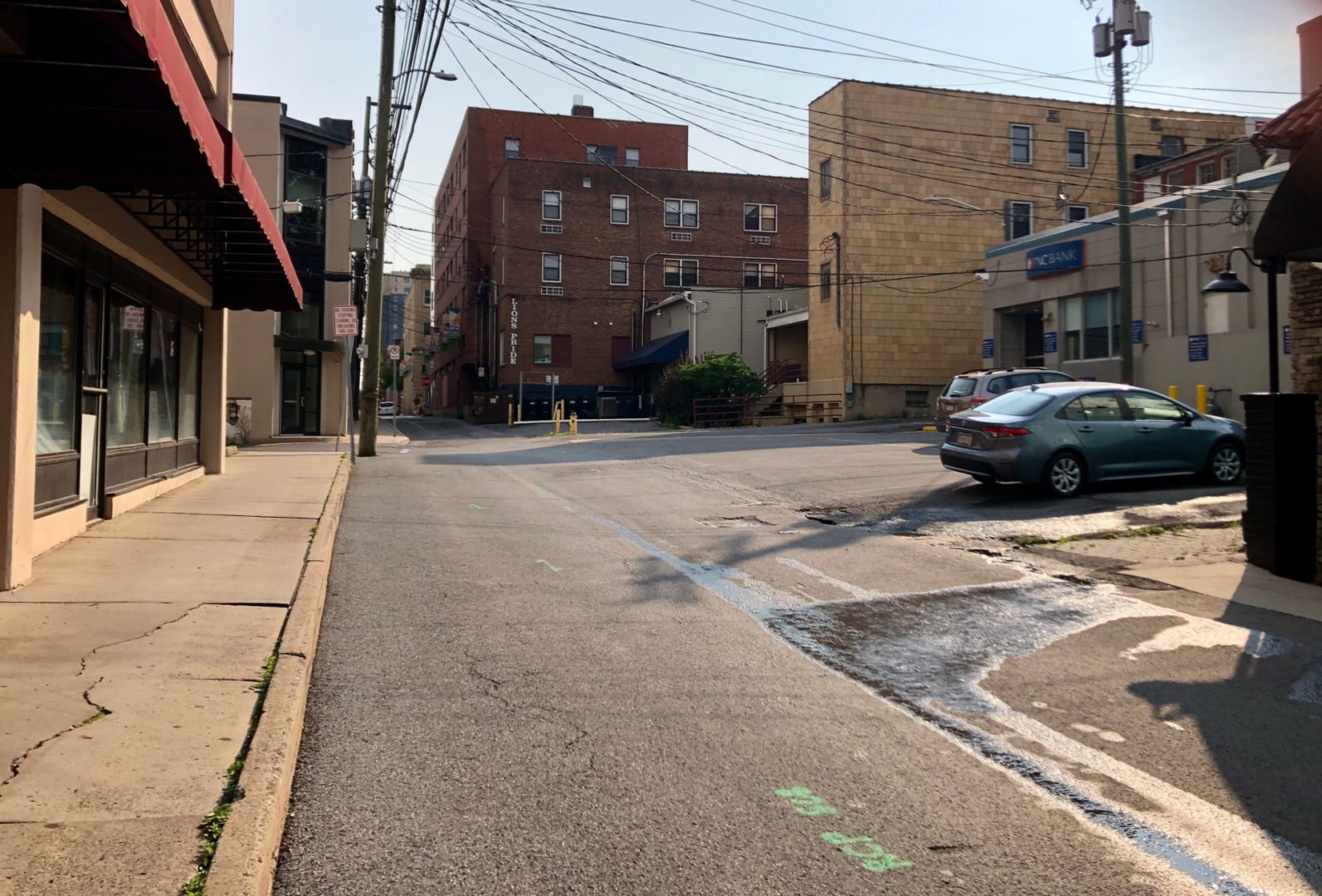The first phase of a multi-year project to replace aging utility infrastructure and create a more pedestrian-friendly space on Calder Way in downtown State College will get underway this summer following two actions by borough council on Monday night.
Council took final action to accept a $2.4 million low-interest loan from the Pennsylvania Infrastructure Investment Authority (Pennvest) for the stormwater management replacement component and awarded the contract for the first phase to HRI, Inc. for $6,687,290.
The loan, which is scheduled for closing on July 6, carries an interest rate of 1.743% in years one through five and 2.179% for years six through 20. It will increase the borough’s total annual debt service payments by about $146,000 per year, from approximately $1.65M to $1.8M.
The borough also has $5.8 million in American Rescue Plan Act funds set aside for the project, as well as $1.7 million from the State College Borough Water Authority for replacement of a water main that has reached the end of its useful life.
Work is expected to begin immediately after the conclusion of the Central Pennsylvania Festival of the Arts on July 16 and continue to November.
Phase one, which encompasses Calder Way between South Fraser and McAllister streets, is part of an overall project to transform Calder Way into a “pedestrian-preferred” corridor with limited vehicular traffic, “replacing curbed sidewalks with more artistic measures and the incorporation of other streetscape enhancements from Hiester to Burrowes,” according to the borough’s 2023-27 Capital Improvement Plan.
Streetscape and transportation work planned in the first phase will include widened sidewalks to provide an at-grade pathway using stamped concrete, ADA upgrades at all intersections with detectable warning devices. The project vision also calls for installation of retractable bollards for traffic control and new lighting, greenery and public art.
At the same time, infrastructure needs to be replaced in what historically has been a utility corridor for the borough. Over the past year engineers have completed the design for utility replacement and relocation the entire length of Calder Way from South Atherton Street — where there is a confluence of utilities supplying everything east in the downtown — to High Street.
Work in the first phase between South Fraser and McAllister will include replacement of sanitary sewer, stormwater, water main and gas main lines and providing provisions for electric and telecommunications lines to be moved underground. Future phases will involve similar work on the rest of the street.
Borough Manager Tom Fountaine said relocation of overhead electric and telecommunications lines underground will require cooperation from the providers and is not expected to occur until the end of the project. Conduits will be installed during each phase, however, to avoid extensive excavation.
“The plan and the goal is that at the end of this project they will be located underground,” Fountaine said. “But they will not be in this first phase or even in the second phase of this project. It will come at the end of the project.”
Logistics for work this year (and beyond) will be challenging, acting borough engineer Andy Arnold said at a council work session in March. Work to replace deeply buried utility lines will be taking place in a narrow corridor in close proximity to “some very old buildings,” all while trying to maintain access to more than 30 properties and nearly 100 businesses.
The borough is coordinating with the Downtown State College Improvement District in preparation for the work.
Sequential project phasing will help limit downtime for utilities to a few hours at a time instead of weeks. Traffic detours will be necessary, though plans will aim to keep the main thoroughfare intersections at Fraser, Allen and Pugh streets open for the majority of the project.
The contract for the project also requires that roads open during large event weekends, particularly home Penn State football weekends in the fall, Arnold said. Fridays of football or holiday weekends would be no-work days, and on Thursdays the work area will be back filled to open access.
Still, there will be inconveniences.
“This is going to be a big project and it’s going to be very disruptive,” council member Deanna Behring said. “I think as community leaders it’s necessary so I think we need to kind of embrace it and make sure the public knows that it’s a necessary evil. … We’ll come out on the other end bigger and better.”
The project stems from the 2013 Downtown Master Plan, which envisions Calder Way as “a shared use space which is more friendly for pedestrians and bicyclists while maintaining vehicle access for emergency and essential services, deliveries, refuse and parking access.”
Part of the borough’s Pedestrian Safety and Universal Accessibility Initiative, the overall project is projected to take until 2028 to be completed at an estimated cost of $30 million. Borough officials continue to work on identifying external funding for future phases.
“This is not the end of a vision,” Mayor Ezra Nanes said of the first phase. “This is the beginning of a journey to get to that vision.”



